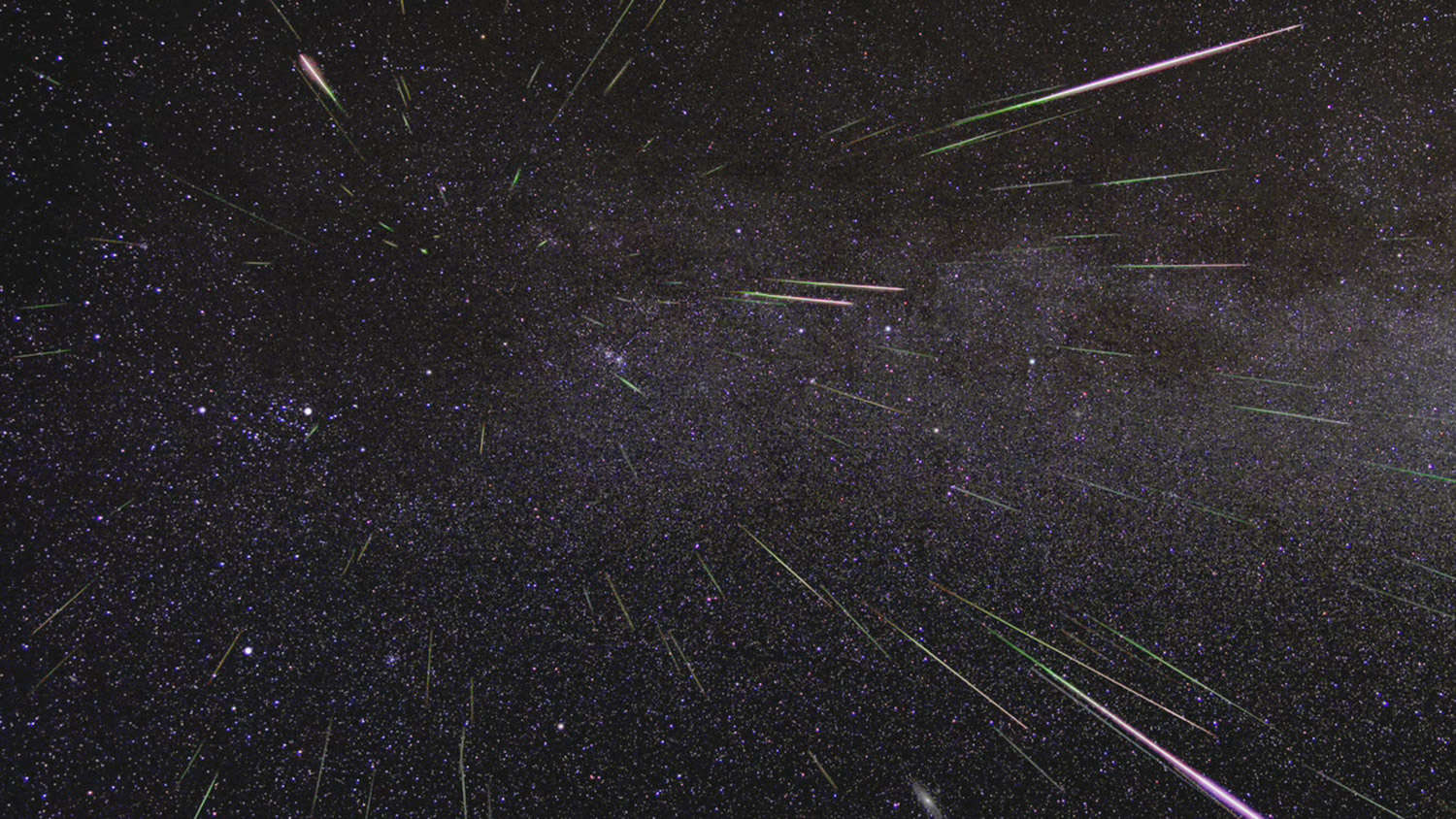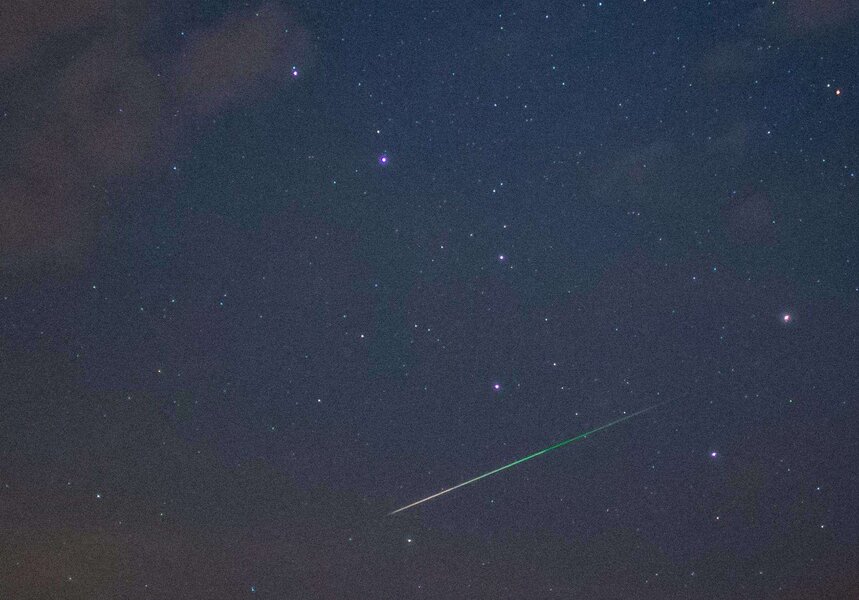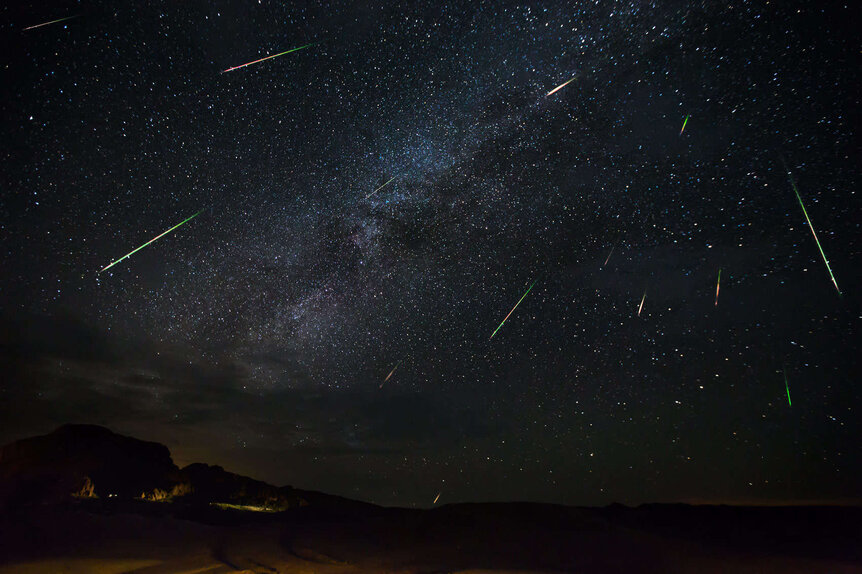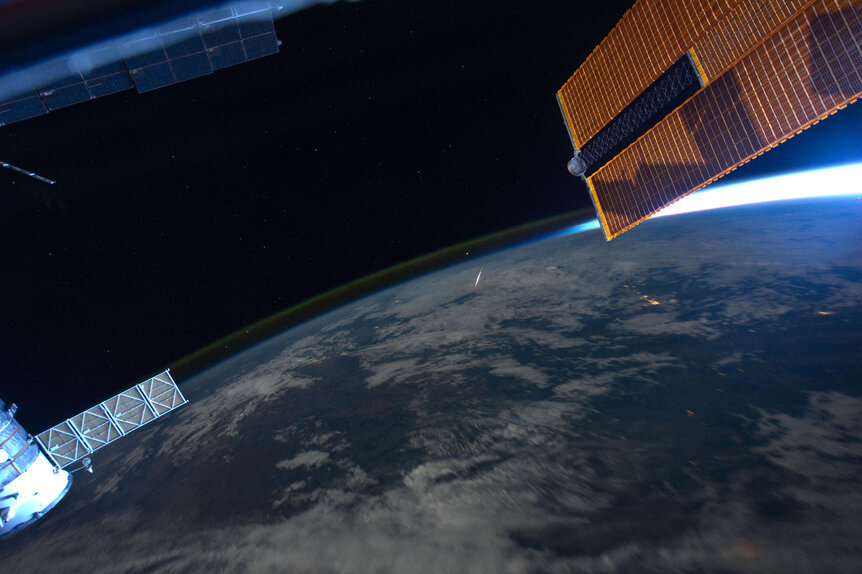Create a free profile to get unlimited access to exclusive videos, sweepstakes, and more!
The Perseids peak this week! Here's how to watch one of the best meteor showers of 2021

The sky is falling! Or it will on the evening of August 12/13, when the Perseid meteor shower reaches its peak. This is a reliable shower, with around 60–100 meteors per hour (or about one per minute), though sometimes more are seen.
Even better: The Moon is a thin crescent and sets a couple of hours after the Sun, so it won't out any meteors with its light.
What follows below is a detailed checklist of what you need to watch the shower (modified from articles from years past), but for the <tl;dr> crowd the important things are: a dark site to view from, a wide open sky, a comfy spot to lie down, and patience. Once your eyes have adjusted to darkness you'll hopefully see the meteors zipping across the sky every minute or two. It's best to wait until after midnight, too, and you don't need a telescope or any viewing aid: Just your eyeballs and as wide an area of the sky to see as possible. You don't even need to go out Thursday night; the few days before and after should be decent as well (I've seen a couple of places say the peak is on the 11/12th, in fact, so going out a night early won't hurt).
[This is an interactive display; click and drag to play with it! Credit: MeteorShowers.org]
What you're seeing are tiny bits of debris (called meteoroids) sloughed off the comet Swift-Tuttle, which takes over a century to orbit the Sun. The comet's orbit brings it just to Earth's orbit, so we pass through this debris every year at the same time, around mid-August, and they burn up high in our atmosphere.
The direction of the meteoroids and the Earth's movement makes them appear to come from the direction of the constellation Perseus, between it and Cassiopeia (if you don't know where they are in the sky, Stellarium is a good site that maps the sky). The net result is they seem to radiate away from that part of the sky — the point they come from is called the radiant — streaking away in random directions.
If you want more general meteor shower info, I have a whole Crash Course Astronomy episode about them.
That's the basics. Want more? Then here you go:
0) Just a preface: As I said above this isn't a sudden event that happens only on Thursday evening. You can go out any night over the next week and get a decent show; the meteoroid stream is pretty wide so it takes the Earth a while to pass through it. It just will be strongest on August 12/13, so if you go out then you'll likely get the best show.
1) Find a place that's dark. Some meteors are bright and easy to spot, others fainter. The darker the spot you find away from house and city lights, the better.
2) You don't really need to face Perseus (to the northeast); in fact your best bet is to have as much sky visible as possible since they can appear suddenly in any spot and move across a lot of sky. The more heavenly real estate you can see, the better your chances of seeing more meteors.
3) Be outside after local midnight — literally, halfway between dusk and dawn. The geometry of the shower makes it more likely to see meteors at that time. Think of it this way: When you're in a car, you see more splattered bugs on your front windshield than the rear one because you're driving forward into the swarm. After midnight, you're on the part of the Earth facing into the direction of the Earth's travel around the Sun, so you'll see more meteors then.
4) Relax! Use a lounge chair or some other comfortable way to lie down. You want to be facing up, and the more comfortable you are the better. A blanket might help; even in the summer a little warmth can be nice. You won't see streaks across the sky every which way like the heavens are falling; you'll see a meteor on average once a minute or three. So you need patience — which is rewarded when you see that bit of light zipping across the sky. It's quite a thrill.
5) Look up! You don't need a telescope or binoculars or other fancy equipment. In fact, you're less likely to see meteors if you're looking through an eyepiece. Remember, the more sky you see the better. A friend or family member is good to have around too, so you can keep each other awake.
6) Taking pictures of meteors isn't too hard even if you only have an inexpensive camera and a tripod. Set it up, point it anywhere you want — find a nice collection of bright stars if you prefer — and let it expose for a few minutes if you can. You'll have a lot of shots of star trails and nothing else, but if fortune favors you, you'll find a nice bright streak or two in some of the pictures. The American Meteor Society has a nice tutorial, and NASA has a brief one as well.
7) You can listen to them! They don't make a sound since they're too high up, but meteors are so hot they ionize the air around them, stripping the electrons from the atoms and molecules. Ionized air makes an excellent reflector of radio waves, and so a meteor will make a radio “ping” as it zips through the sky. You can listen to this during the meteor shower at the Live Meteors website. It's eerie and very cool.
That's the viewing guide. I also get lots of questions from people around this time of year, so here's a FAQ, too:
Meteors, meteoroids, and meteorites, oh my!
Meteoroids are the solid bits of debris. Meteors are what we call them as they shine brightly, ramming through our air. Usually they burn up, but if they make it to the ground we call them meteorites. So a meteorite is a meteoroid that survives being a meteor.
How fast are the meteors traveling?
A typical Perseid is moving at about 60 km/sec (35 miles/sec) when it enters our atmosphere. That's 200,000 kph (130,000 mph)! That's incredibly fast; rapid enough to get from the Earth to the Moon in just two hours.
Geez, that's fast! Are we in any danger from the meteors?
Nope. These are generally not much more substantial than snowflakes or grains of sand. They burn up 90 – 100 kilometers above the ground, far, far above your head.
Are astronauts in danger from meteors?
Not really. The odds of the space station getting hit are incredibly low, even over the course of many years. But in 2011 astronaut Ron Garan got a photo of Perseid meteor burning up in the air below him. How cool is that?
Why do they leave a smoke trail?
That's not really smoke; it's vaporized meteoroid bits. As the meteoroid screams through the air it gets hot because it's violently compressing the air ahead of it — when you squeeze a gas it gets hot, and the meteoroid is squeezing the air hard. Bits of the particle melt and blow off (astronomers call this ablation) forming the long trail (technically, we call it a train) and can take a few seconds to cool and fade.
One meteor got really bright and I thought I saw a puff of smoke that lasted for a few minutes. What was that?
Pushing through our air at high speeds puts the meteoroid under incredible pressure. It can break apart, and the pieces burn up much more rapidly. This can cause a pulse or multiple pulses of light, basically explosions. The meteoroid can disintegrate, creating a big puff of ionized particles that sometimes last for several minutes (this is called a “persistent train”), which then gets twisted in high-altitude winds. It's rare, but spectacular. I've never seen one.
Why are some meteor trains long and some short?
The length of the train depends on the angle of the meteor toward you. If it's headed right at you it will appear foreshortened, so it looks really short. If it's headed tangentially from you, more or less across the sky, it'll appear longer.
Its like someone throwing a ball right at you to catch versus watching two people play catch from the side. Perspective counts.
How far away can I see a meteor?
The farthest a meteor can be from you is when it's right on the horizon, which is about 1,100 km away from you for a height of 100 km. I have a blog post with all the fun math!
Do meteorites hit the Moon?
Yes! You can even watch video of two them whacking the Moon back in 2018. Another one hit in 2019 during a full lunar eclipse, too.
It's cloudy where I am. What can I do?
Bummer. But you can listen to them, as I linked above, and other sites will have streaming live views as well. The Virtual Telescope Project will stream live starting at 00:00 UTC, and I'm sure you can find more with a quick search. Take a look!
Again, I have lots more in my Crash Course Astronomy episode, which will give you background info. I hope you can get out to see this shower, and witness astronomy and physics in action. It's a lot of fun! Enjoy.































